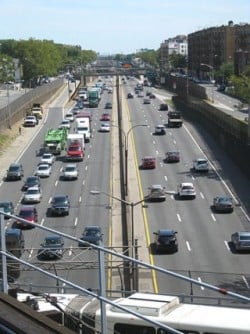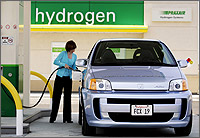Most everyone and their brother it seems, views the world of travel through rose-colored glasses. I couldn’t be more serious.

In this space things aren’t just out of whack, they’re out of place. And, I am of the firm opinion that, not only are travel and transportation headed in the wrong direction, but resulting will be their hitting the proverbial brick wall if neither gets back on track.
An interested person’s view – mine
I remember the many times I traveled cross country both by car and by plane and a goodly proportion thereof also by train. Each has its advantages: There’s the speed element in flying; the access and flexibility elements in driving; and, where riding the rails is concerned, all immediately coming to mind are the aspects of comfort (which under the comfort umbrella includes an experience, for all intents and purposes, that is hassle-, stress- and worry-free), air- and environmental- friendliness and safety.
Where the steel wheel meets the rail
My thing is it’s all about finding the proper balance, determining the correct mix and making travel as seamless as possible (a unifying of the modes if you will) so as to achieve the greatest efficiencies, ensure sustainability and promote technological innovation to guarantee environmental security while, at the same time, contribute to cleaner and healthier air and water. And, this can come about not by tweaking transportation and travel in a vacuum, that is, independent and in isolation from all other elements, but instead in cooperation and collaboration with land-use and development and other key decision-making.
Americans on average spend more than 40 hours per annum stuck in traffic and behind the wheel on a per-capita basis we’re, on average, logging 10,000 miles a year, while over that same time duration, our vehicles consuming fuel to the tune of 600 gallons. Collectively, American drivers are yearly amassing 3.2 trillion miles of travel in our approximately 260 million on-road vehicles. And, it’s important to remember that America is just one country; a big country, but still, just one country. There are many like the U.S. in this regard doing similarly. That in and of itself wouldn’t be so negative air-impacting if all such vehicles in question were zero-emissions types. But, such today is not the case.
So, how does the world get back on track?
In shedding light, a person I know made clear they liked high-speed rail. But, not for the reason you’re probably thinking. It wasn’t so much that this one individual would ride the train. It was more a case that the insightful human being standing before me at the time having reasoned that by virtue of all those who’d avail themselves of high-speed train travel, pavement on, in this case, the paralleling California State Route 99 (and presumably portions of Interstate 5 – we’re talking freeways here in case you haven’t guessed) would be opened up further for more vehicles thereby making that thoroughfare less crowded, my friend not only recognizing such, but fully ready, willing and able to take advantage.
Where the rubber tire meets the road and runway
The part of the transportation paradigm where driving is involved, from what I have read, there are hints, suggestions that car ownership is becoming obsolete. As a matter of fact, there are those who insist that due to the latest in travel-realm advances, mass public transit is on its way out as well, these advances, namely, being car-sharing and ride-hailing which seems all the rage these days.

Just for the sake of argument, even if car-sharing and ride-hailing let’s say were to really take off, my take is that such services will be confined mostly to the city sphere and not outside of it.
Many, meanwhile, subscribe to the notion that on the highway, between cities, is where driverless motor vehicle operation (I hesitate to use the term driving here) will pick up steam so to speak. But we all know that universal autonomobility is still quite a ways off, though, there are some no doubt that would vehemently disagree.
Being that I do not know too many folks who relish driving long distance (I know I surely don’t) and depending how long a distance, for this very reason, high-speed rail offers the perfect platform as a substitute – a “fill-in” if you will.
That now brings this conversation to planes.
As of right this moment there is a need for planes. And, as far as I can tell, there always will be. The trick here is to have them be less air-polluting than what they are currently. That would help out tremendously. Though it is hard to see how this mode of travel will ever be completely emissions free.
Balancing act
That all said, it all gets back and comes down to having as sane, seamless, intelligent, efficient, flexible and non-negatively impacting in the ecological or environmental sense a transportation network as possible.

The way I see it, this is what it will take.
Images: Connor Harris (second); Robert Alfers (fourth)
This post was last revised on May 26, 2020 @ 6:47 a.m. Pacific Daylight Time.
– Alan Kandel

